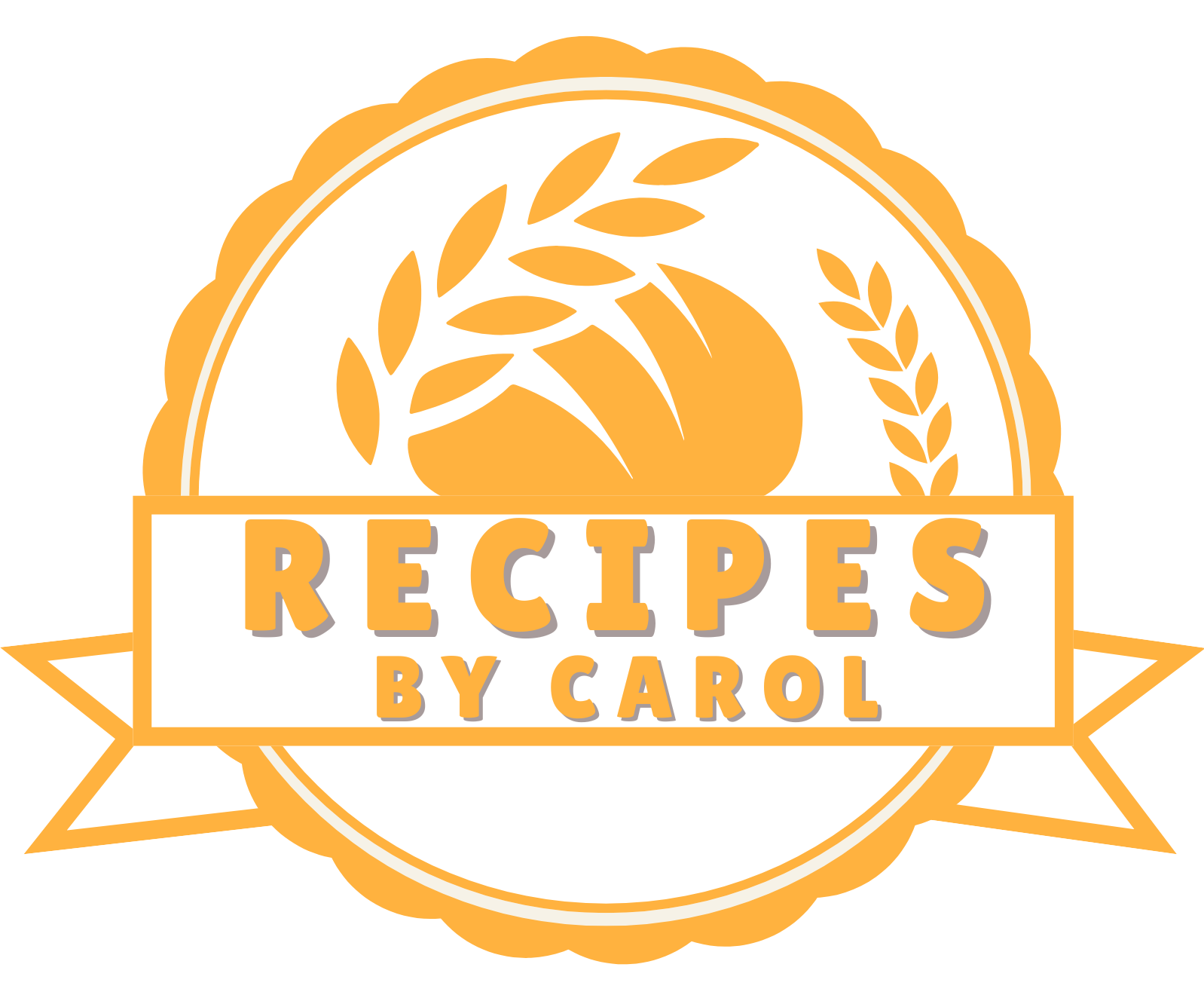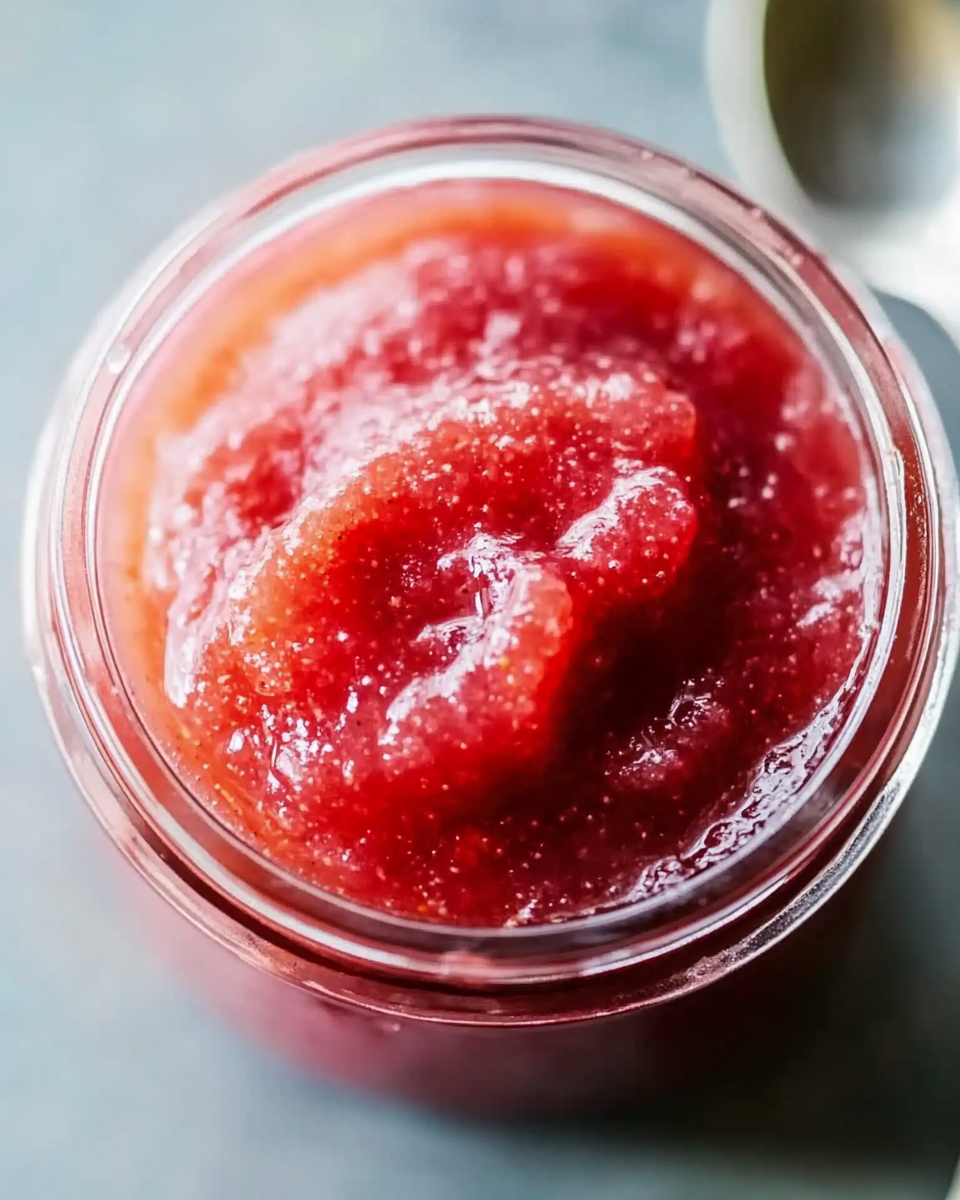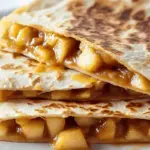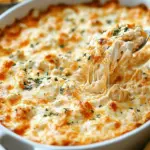This Rhubarb Butter is the epitome of spring in a jar. With its smooth texture and a perfectly balanced flavor that dances between tart and sweet, it’s a spread that turns the ordinary into something extraordinary. Just six ingredients and a little simmering time, and you have a velvety fruit butter that enhances everything from warm toast to delicate desserts.
What makes this recipe so special is its simplicity fresh rhubarb, a hint of lemon and vanilla, and a touch of optional cinnamon bring depth without overpowering the rhubarb’s natural brightness. Store a jar in the fridge or freeze it for a taste of spring whenever you need a little sunshine on your plate. Whether you’re new to fruit butters or a seasoned preserver, this is a recipe you’ll keep coming back to.
Full Recipe:
Ingredients:
-
6 cups fresh rhubarb, chopped
-
1 ½ cups granulated sugar
-
½ cup water
-
1 tablespoon lemon juice
-
1 teaspoon vanilla extract
-
½ teaspoon ground cinnamon (optional)
Directions:
-
In a large saucepan over medium heat, combine rhubarb, sugar, and water. Stir gently to dissolve the sugar.
-
Bring the mixture to a gentle simmer and cook for 20–25 minutes, stirring occasionally, until the rhubarb softens and begins to break down.
-
Use an immersion blender (or carefully transfer to a blender) to purée the mixture until completely smooth.
-
Stir in the lemon juice, vanilla extract, and cinnamon (if using). Simmer for another 5 minutes until the texture is thick and creamy.
-
Remove from heat and let cool slightly. Transfer to a clean, airtight jar.
-
Store in the refrigerator for up to 2 weeks, or freeze for longer storage.
Prep Time: 10 minutes | Cooking Time: 30 minutes | Total Time: 40 minutes
Kcal: 45 kcal | Servings: 16 servings
Rhubarb Butter: A Celebration of Spring in a Jar
When the first stalks of rhubarb emerge from the garden beds, they announce the arrival of spring with their striking red hues and tart flavor. Rhubarb Butter smooth, vibrant, and delicately sweet is one of the most delightful ways to preserve this seasonal vegetable (yes, technically a vegetable!) and enjoy its unique tang throughout the year. It’s a recipe that bridges tradition and modern simplicity, offering a natural, preservative-free spread that elevates everything from breakfast toast to elegant desserts.
The Heritage of Rhubarb
Rhubarb’s history is as rich and complex as its flavor. Native to Asia, specifically China and Tibet, rhubarb was first cultivated for medicinal purposes over 2000 years ago. It was known for its laxative and anti-inflammatory properties and was highly prized in ancient apothecaries.
It wasn’t until the 18th century that rhubarb found its place in the culinary world, particularly in Europe and North America. Once sugar became more widely accessible and affordable, the tartness of rhubarb could be tempered, making it suitable for use in pies, jams, compotes, and most elegantly fruit butters. This shift turned rhubarb into a seasonal favorite, especially in cooler climates where it thrives in the early spring and summer months.
What is Fruit Butter?
Unlike jam or jelly, fruit butter is not made with pectin and does not have a gelled consistency. Instead, fruit butter is created by slowly simmering fruit with sugar (and sometimes spices or citrus juice) until it breaks down and thickens into a smooth, spreadable paste. The term “butter” refers not to any dairy content but to the luxurious, creamy texture of the finished product.
Rhubarb Butter, in particular, is known for its velvety mouthfeel and its delightful balance between sweet and tart. It’s less sugary than traditional jam, allowing the natural character of the rhubarb to shine through. It’s also incredibly easy to prepare and keeps well, making it an ideal homemade preserve for beginners and seasoned canners alike.
The Flavor Profile of Rhubarb Butter
Rhubarb Butter is both simple and sophisticated. Its tartness is its signature, but when balanced with a touch of sweetness, a squeeze of lemon, and a whisper of vanilla, it becomes something extraordinary. Some variations may include cinnamon or ginger for depth, or even strawberries for added fruitiness, but even in its most basic form, rhubarb butter carries a layered flavor profile.
What makes this spread stand out is its smooth texture. Unlike chunky preserves, the finished butter is puréed into a silky consistency that spreads like soft caramel. This makes it ideal for incorporating into a wide range of dishes without compromising texture or presentation.
Health Benefits of Rhubarb Butter
Beyond its flavor, rhubarb brings a number of nutritional benefits to the table. It’s low in calories and high in fiber, which supports digestive health. Rhubarb also provides significant amounts of vitamin K, which plays a key role in bone health and blood clotting, as well as antioxidants like anthocyanins that may help reduce inflammation and combat oxidative stress.
When you make rhubarb butter at home, you have full control over the ingredients. You can opt for organic produce, reduce the sugar to your taste, and avoid artificial preservatives altogether. Compared to store-bought jams and spreads, which often contain high-fructose corn syrup and food coloring, homemade rhubarb butter is a wholesome and naturally vibrant alternative.
Culinary Uses for Rhubarb Butter
One of the best things about Rhubarb Butter is its versatility in the kitchen. Here are just a few of the many ways to use this flavorful spread:
-
On Toast or Biscuits: The classic application. A thick smear on warm toast, English muffins, or freshly baked biscuits creates a perfect breakfast bite.
-
Swirled Into Yogurt or Oatmeal: Add a dollop to your morning bowl of Greek yogurt or steel-cut oats for a tangy-sweet kick.
-
As a Cake or Tart Filling: Use it between cake layers, inside thumbprint cookies, or as a glaze for fruit tarts. It pairs wonderfully with vanilla, almond, and citrus-based baked goods.
-
With Savory Dishes: Rhubarb Butter isn’t just for sweet applications. Its acidity and fruitiness make it a beautiful glaze for pork chops, grilled chicken, or roasted root vegetables.
-
On a Cheese Board: Serve it alongside soft cheeses like brie or goat cheese for a sweet-tart contrast. It also works well with sharper cheeses like aged cheddar.
-
In Cocktails or Lemonade: Stir a spoonful into a glass of sparkling water, lemonade, or a gin-based cocktail for a sophisticated twist.
-
As a Gift: Poured into small jars and tied with ribbon, rhubarb butter makes a thoughtful, homemade gift for friends, family, or holiday hostess baskets.
Variations to Explore
Rhubarb is highly versatile and pairs beautifully with a variety of other flavors. Some popular additions include:
-
Strawberry: The classic combination, balancing rhubarb’s tartness with berry sweetness.
-
Orange Zest: Adds brightness and complexity.
-
Fresh Ginger: For a subtle heat and added depth.
-
Cardamom or Nutmeg: Aromatic spices that create a more exotic profile.
-
Honey or Maple Syrup: As a natural sweetener alternative to refined sugar.
These simple tweaks can completely change the flavor profile of your rhubarb butter while keeping the technique the same.
Storage and Preservation
One of the practical joys of rhubarb butter is how well it stores. After cooking and cooling, it can be kept in the refrigerator in a sealed jar for up to two weeks. For longer storage, consider the following options:
-
Freezing: Pour into ice cube trays or small freezer-safe containers. Once frozen, transfer to a zip-top bag for space-efficient storage. It will keep for up to 6 months.
-
Canning: If you’re familiar with water bath canning methods, rhubarb butter is a great candidate. Be sure to follow proper canning protocols, including sterilizing jars and adjusting processing times based on altitude.
Whether refrigerated, frozen, or canned, the preserved rhubarb butter will provide a taste of spring even in the depths of winter.
Conclusion:
Rhubarb Butter is more than a preserve it’s a celebration of seasonal cooking, an example of simple ingredients becoming something elegant and memorable. With its lush texture, balance of flavors, and myriad uses, it deserves a permanent spot in your spring kitchen routine.
Whether you’re preserving a backyard harvest or picked up a bundle at the farmer’s market, this spread is the ultimate way to honor rhubarb’s fleeting season. And while it may be humble in appearance, its flavor and versatility make it a true standout. Serve it on a brunch board, gift it to a neighbor, or keep a jar on hand for daily indulgences it’s one of those recipes that feels as good to make as it does to eat.
So the next time rhubarb is in season, don’t just make pie make butter. Your future self (and every breakfast to come) will thank you.




